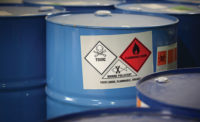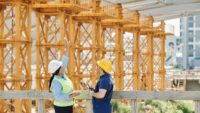To quote the famous British writer Sir Arthur Conan Doyle, creator of Sherlock Holmes, “It is a capital mistake to theorize before one has data. Insensibly one begins to twist facts to suit theories, instead of theories to suit facts.” So how does this relate to the safety industry and more specifically to the safety of our teams?
Although other industries adapted to the new reality of a data-driven society years ago, the safety industry has lagged. Now, it’s time for the safety industry to embrace data.
Many of us use connected devices like cell phones and smart home devices, yet when it comes to connectivity and data collection on the job, the safety industry is more reserved. Often, conversations about connected safety, or using connected devices to collect valuable safety data and protect workers, will cause safety managers to cite privacy concerns.
While it’s always important to strike a balance between respecting worker privacy and maintaining safety, these concerns show how easy it is to overlook the value of data from portable or area gas detectors. There are many ways to use gas detection data that do not require monitoring every move your workers make.
The best way to improve safety is by using data specific to your site’s hazards. Too often, gas detection data is collected, stored, and never reviewed. Or worse yet, it is not reviewed until a catastrophic event forces a post-mortem investigation of the numbers.
Here, we’ll cover three ways to use gas detection data to improve worker safety.
Tracking exposure
Gas detectors can show you valuable data on what gases workers are exposed to. Alarm events and high exposure levels are clear evidence that your team may be in danger. But, prolonged gas exposures just below the alarm thresholds point to at-risk conditions just as clearly.
Here’s an example of how you can use gas alarm data to track worker exposure and ensure workers get medical attention when they need it:
When a high gas alarm sounds, workers evacuate the area. As a safety manager, you are responsible for the follow-up procedure. Do you send the exposed workers for a medical examination? Or do you assume that they are perfectly healthy because they say they feel fine? In a case like this, the data gathered by personal gas detectors could save someone’s life. Even short exposures to high concentrations of certain gasses could be harmful to your workers. After a short exposure a worker could feel fine, but symptoms might develop after he or she goes home for the day. With the data collected by gas detectors, you can view a detailed report on every worker’s gas exposure, whether it triggered a high alarm or not, to make informed decisions on proper follow up.
Ensure proper equipment usage
Despite all the advancements in gas detection technology, workers still die from exposure to toxic and explosive gases. Even with the most reliable instruments, the likelihood of workers being injured or killed on the job remains high if instruments are not used properly.
In an organization with a weak safety culture or poor processes, team members might not use gas detectors correctly. Or worse yet, they might not use them at all. You can use data from your gas detectors to spot habits that endanger your team members. Many gas detection management programs come with tools to help you use data to identify at-risk behaviors, like workers using gas detectors without a bump test, using gas detectors overdue for calibration, ignoring alarm events, or not using gas detectors at all.
Identify trends
Tagging alarm data with specific locations on your site allows you to gain new insights into previously unanalyzed data. For example, you could look at the number of alarms triggered at a specific location during a given time period. You can then use the alarm data to spot trends and identify the root cause to prevent the problem from happening again.
As more data is collected, there are an increasing amount of innovative ways to use it. For example, today there are systems that use advanced predictive models to identify the dispersion path of a chemical release. With predictive models, data is fed into software that analyzes patterns to identify what will happen in the future, allowing you to take action quickly and stay one step ahead of gas hazards. This type of data is particularly valuable when used proactively to make changes before a disaster strikes.
Thanks to the power of data, every company will soon have the opportunity to predict when and where the next gas leak will occur, so you can take steps to prevent it. But until then, there are many options for using your gas detection data to protect workers, assess your safety culture, and drive operational improvements.
As Sir Arthur Conan Doyle says, it’s important to use facts to inform your theories – especially when it comes to safety.



